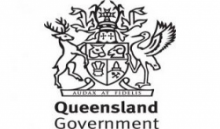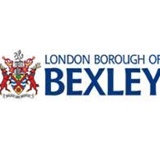Title Page
-
Client / Site
-
Conducted on
-
Prepared by
-
Location
-
Type sanitation used in pool
-
Personnel
The Pool
-
Is the water clear?
-
Are there any signs of algae on the pool surfaces?
-
Is the pool floor clean, (no band-aids, leaves or dirt)?
-
Are the skimmer gutters and gratings are clear and free from algae, slim and scum marks?
-
Is there pressure gauges fitted to filters?
-
Are the filter traps are adequately guarded to prevent injury to users?
-
Swimming pool is in a good state of repair?
-
Ladders are in good condition and are provided at the deep and shallow ends of the pool?
-
Ramps and hydraulic lifts are maintained in a safe condition (where fitted) ?
-
Pool depth markers are displayed prominently and are 100mm in size or greater?
-
Is the pool clearly marked with shallow end and deep end?
Testing of pool water
-
The appropriate equipment to enable measurement of the level of disinfectant, PH, stabilizer and pool water temperature is being use (photometric) ?
-
The results of water analysis are available and kept as a permanent record?
-
Is the free chlorine level maintained above 1.5ppm
-
Is combined chlorine (total chlorine minus free chlorine) less than 1ppm?
-
Is the pool being tested as per the Qld health pool and spa guidelines (3 times a day)?
Emergency response and fire safety
-
Safety rules, emergency information and evacuation routes are prominently displayed?
-
The emergency alarms can be heard in this area?
-
Fire control equipment is easily accessible, signed, regularly tested and of the appropriate type?
-
An approved first aid kit is available and stocked appropriately?
-
A current resuscitation chart is clearly visible?
Management procedures
-
There is a qualified/trained pool operator looking after the pool?
-
Safe operating procedures are displayed with potentially hazardous equipment/ machinery?
-
Personal protective equipment such as goggles apron and gloves are available for the pool operator?
Pool surrounds
-
The area surrounding the pool is clean and tidy?
-
Floor surfaces are non-slip, unbroken and maintained in a safe condition?
-
Plants, trees are safe, non toxic and in good condition?
-
Steps/ stairs/ ramps are in a safe condition with non-slip surfaces and secure handrails where needed?
-
Doors, gates fences, locks and latches are in good condition and in working order?
-
Pool fencing is in good condition?
-
Gates close automatically?
-
Guarding (mesh) or signage is in place for any fragile roof areas?
-
The area is adequately shaded?
-
Where the pool in enclosed the ventilation is adequate?
-
Where the pool is enclosed, the building lights, fixtures, fittings and windows are in safe condition?
-
Is the pool a "glass free" area (no glass fronted cabinets, clocks or bottles) ?
Storage
-
Required resources and equipment is stored safely (eg. separated from hazardous substances)?
-
Flammable material is stored and handled in a safe manner?
-
Free standing shelves/ cupboards are secured to ensure stability
-
Storage areas are labelled appropriately (placarding is not generally necessary unless quantities of pool chemicals exceed 500 litres or kilograms)?
-
Waist containers are available and labelled appropriately where necessary?
Hazardous substances
-
Chlorine and acids, including empty containers are stored in separate locations (Note: acids and chlorine products can react producing toxic chlorine gas. Chlorinated cyanurates will react with acids or alkaline substances to produce explosive conditions due to the release of Chlorine dioxide. Calcium Hypochlorite in contact with organic or oxidisable or combustible substances such as chlorine or petroleum products may form a mixture that spontaneously burst into flames or explode)
-
Are chemicals stored in a clean dry well ventilated secure area?
-
There is an up to date register/ stock control sheet to detail storage and handling requirements?
-
Appropriate washing, dousing facilities are available in the event of an accident with chemicals?
-
The quantity of chlorine and or acid is stored within the recommended guidelines for the size of the pool?
-
There is current SDS sheets available for hazardous substances (less than 5 years old)?
-
Hazardous substances are appropriately labelled?
-
Containers of acid are stored in a bunded area?
Electrical
-
Electrical equipment is in good condition tested as required according to the departments procedures (generally 6 monthly)?
-
The area has RCD protected circuits?
Plant
-
Manuals are available for the operation of equipment and machinery?
-
Swimming pool plant is identified on the site maintenance register ?
-
The moving parts of machinery are appropriately guarded in accordance with regulations?
-
All machinery is fitted with appropriate safety signs and SOPs
-
All pool plant is safe and maintained in a good state of repair?
Toilets
-
Toilet facilities are clean and in good condition?
-
Items such as hand soap/sanitiser are available to maintain appropriate level of hygiene?
Change rooms
-
Are showers available to shower before entering pool?
-
Private and secure change rooms are available for changing clothing?
-
Rooms are clean and in good condition?
-
Hooks and other items are not hazardous?
-
Floors are non-slip?
-
The floors are dry and well drained after use?
-
All sinks, drains and toilets are operating in a satisfactory manner?
General
-
No other hazards such as sharps, glare, noise or vermin have been identified?
-
Gas pipes and chemical lines are clearly labelled?
-
All furniture is safe and in good condition?
-
Isolation valves are readily accessible and clearly labelled?
-
Are pool operators and swim teachers aware of actions required in the event of a faecal/vomiting incident?














